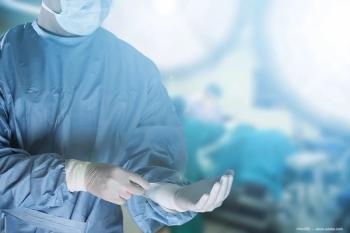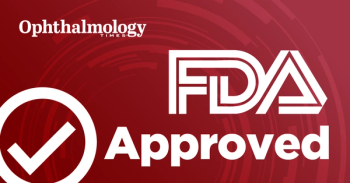
Hyperopic shift biomechanical
Findings from the use of advanced diagnostic technology to evaluate serial anatomic and topographic changes in eyes with stage 4 diffuse lamellar keratitis support a new paradigm explaining the hyperopic shift associated with this post-LASIK complication and central toxic keratopathy.
San Francisco-Findings from the use of advanced diagnostic technology to evaluate serial anatomic and topographic changes in eyes with stage 4 diffuse lamellar keratitis (DLK) support a new paradigm explaining the hyperopic shift associated with both this post-LASIK complication and central toxic keratopathy (CTK), according to Brian R. Will, MD.
Dr. Will used the rotating Scheimpflug camera (Pentacam, Oculus) and high-resolution optical coherence tomography (OCT) to image eight eyes with stage 4 DLK from the time of their initial presentation through ultimate recovery of 20/20 best spectacle-corrected visual acuity. The Scheimpflug studies demonstrated the evolution of shape and power changes that were reversible over time and corresponded to changes in flap and stromal bed thickness seen on OCT. Importantly, the OCT studies also demonstrated an absence of stromal necrosis or tissue remodeling.
Based on his research, Dr. Will proposed that the hyperopic shift associated with stage 4 DLK and CTK is a biologically modulated, reversible biomechanical event controlled by inflammatory cytokine changes. The evidence refutes the concept that collagen and extracellular matrix necrosis (ECM) leading to loss of tissue volume and subsequently corneal melting and flattening represent the physiological basis for the hyperopic shift, he said.
"Our studies and an exhaustive review of more than 200 published basic science and clinical papers provide no evidence to support the latter theory," Dr. Will said. "Rather, we believe inflammatory cytokines present in eyes with stage 4 DLK or CTK drive modifications in tissue biomechanics. Therefore, improved understanding of the impact of laser vision correction procedures on interstitial fluid pressure, tissue tension, and tissue compliance will be critical in the future for improving surgical outcome predictability as well as for reducing complications."
Newsletter
Don’t miss out—get Ophthalmology Times updates on the latest clinical advancements and expert interviews, straight to your inbox.
















































.png)


